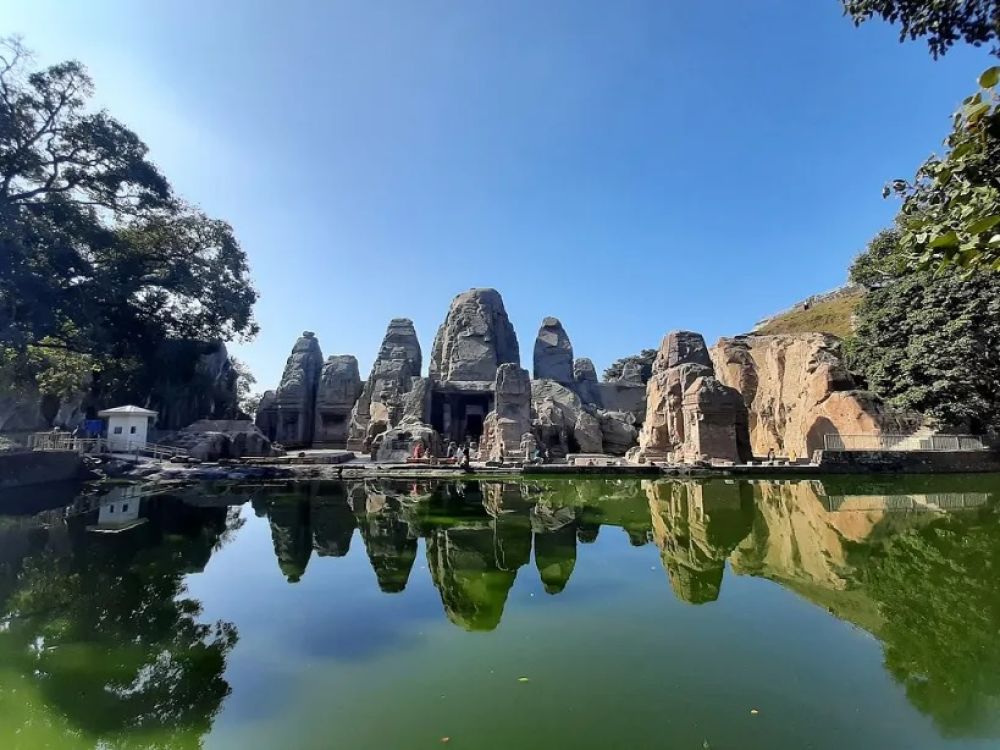

The Masroor Rock Cut Temple, nestled in the mystic landscapes of Himachal Pradesh, near Dharamshala, is a significant yet lesser-known archaeological marvel in India. This temple complex is a shining example of monolithic rock-cut architecture in the northern region of the country, akin to the famous Ellora Caves in Maharashtra.
The origins of the Masroor Rock Cut Temples are shrouded in mystery, and scholars have various theories about their construction. It is broadly accepted that these temples date back to the 8th century and are attributed to the period of the Gupta Empire which is often referred to as the "Golden Age of India" due to the substantial achievements in arts, science, and culture.
The temples are a group of 15 monolithic rock-cut structures that depict various deities of the Hindu pantheon. The main shrine is dedicated to Lord Shiva, and the complex is orientated in such a way that it is believed to have astronomical significance. The layout parallels the Hindu ideology of the cosmos and embodies intricate carvings of divine entities and mythological themes that captivate historians and tourists alike.
Although not as widely recognized as other Indian landmarks, Masroor Rock Cut Temple has seen a steady increase in visitors over the years, particularly those with a penchant for ancient history and architecture. The temple serves as a stark reminder of India's extensive cultural tapestry and the advanced state of art and architecture that existed in the region thousands of years ago.
The Himachal Pradesh government has been working towards improving accessibility and facilities to encourage more tourists to explore this hidden gem. Efforts such as building better roads, providing guides, and creating informative displays have all contributed to a more comprehensive experience for visitors.With an increasing number of travelers seeking off-the-beaten-path destinations and authentic cultural experiences, places like the Masroor Rock Cut Temple are gaining popularity. The latest trend in tourism highlights sustainable and responsible travel - tourists are more inclined to visit sites that promote conservation and engage the local community beneficially.
Travelers to Dharamshala now often include the Masroor Rock Cut Temple in their itineraries, combining a visit to this ancient site with treks in the Dhauladhar range, a visit to the Dalai Lama's monastery, and experiencing the serene beauty of the Kangra Valley.For those planning a trip to the Masroor Rock Cut Temple, it is advisable to visit during the months of March to November. The weather is pleasant during these months, providing clear views and comfortable temperatures for exploration. The monsoon season, while lending a unique beauty to the landscape, might make the rocky terrain slippery and harder to navigate.
The temple complex is located about 40 kilometers from Kangra and can be reached by local bus or taxi services. There is no entry fee, and the site is typically open from sunrise to sunset. Visitors are advised to wear appropriate footwear and carry water, as the site requires some walking and climbing.
For aficionados of ancient architecture, spiritual seekers, and history buffs alike, the Masroor Rock Cut Temple offers a profound glimpse into India's past that is sure to inspire awe and reverence.